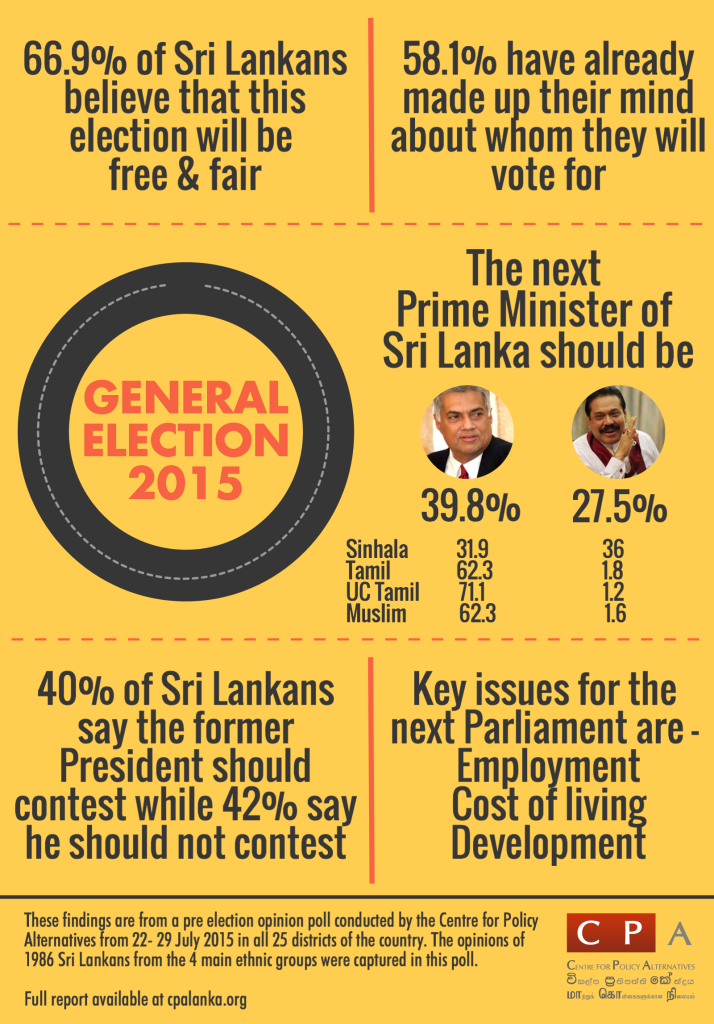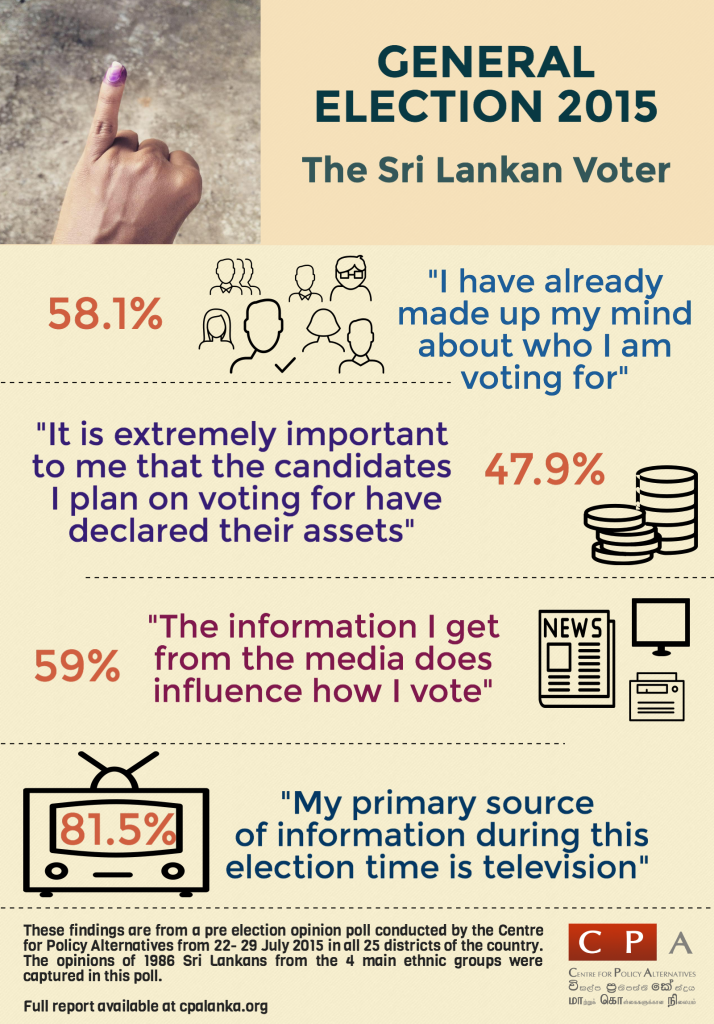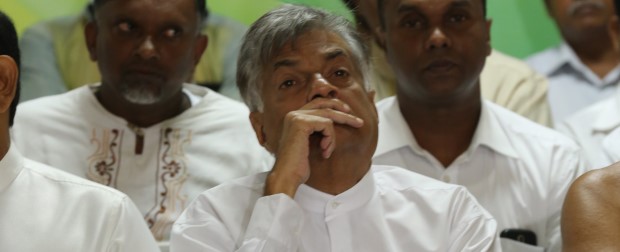(Ranil Wickremesinghe ©s.deshapriya)
4 August 2015, Colombo, Sri Lanka: Social Indicator, the survey research unit of the Centre for Policy Alternatives conducted an island wide pre election opinion poll with the objective of identifying Sri Lankan voter perceptions and attitudes on key topics being discussed in the lead up to the election and thereby contribute to the current political discourse.
Only 4 % of Sri Lankans believe that the 2015 General Election will not be free and fair and 66.9% believe that it will be.
When asked about who they think is best suited to be the Prime Minister of Sri Lanka, majority from the Tamil (62.3%), Up Country Tamil (71.1%) and Muslim (62.3%) communities said Ranil Wickremesinghe, with less than 2% from each community saying that it should be Mahinda Rajapaksa. Opinion in the Sinhala community is divided, with 36% saying that it should be Mahinda Rajapaksa and 31.9% saying Ranil Wickremesinghe.

Sri Lankans are divided on the question about whether former President Mahinda Rajapaksa should be contesting in the upcoming General Elections. 40% of Sri Lankans say that the former President should contest while 42% say that he should not contest.
The key issues that Sri Lankans believe the next Parliament should address are employment and employment opportunities for youth, reduction in the cost of living, accelerating the development of the country and improving the education system.
The three most important characteristics that Sri Lankans look for in a candidate are what that candidate has done for the country (19.4%), education (17.5%) and that they are not corrupt (15.6%). For almost 50% of Sri Lankans it is extremely important that the candidates they plan on voting for have declared their assets while 18.5% say that it is somewhat important for them.

59% of Sri Lankans say that the information they get from the media influences how they vote, while 29.6% say that it does not.
Conducted in the 25 districts of the country, this opinion poll captured the opinion of 1986 Sri Lankans from the four main ethnic groups. Fieldwork was conducted from the 22 – 29 July 2015.
Please click here to read the full report and access the high resolution infographics.
